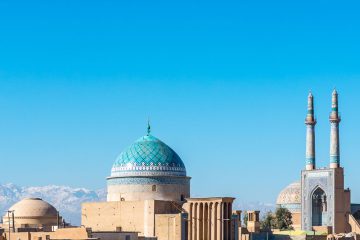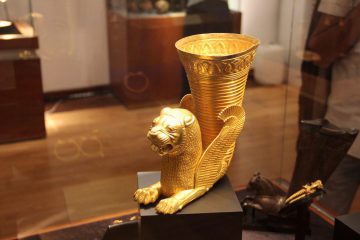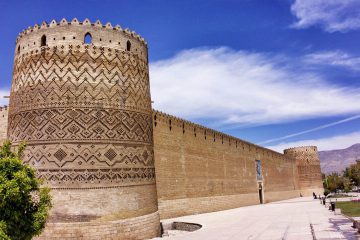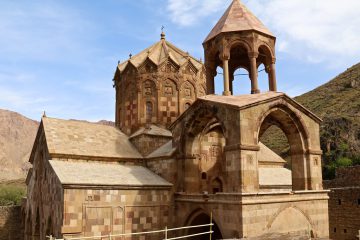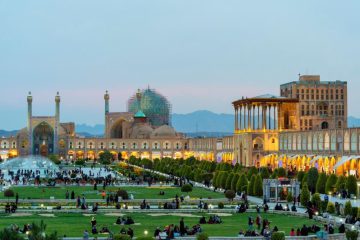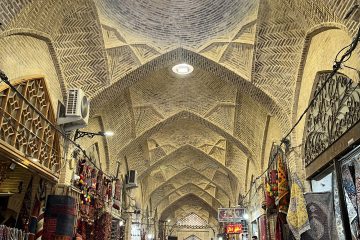
Top 10 off the beaten track sites (IRAN)
1. Bam citadel:
Let’s start top 10 off the beaten paths in IRAN with Bam! Picture this: Bam, a gem in the heart of the desert on the southern edge of the Iranian high plateau. Its story goes way back to the Achaemenid period, from the 6th to the 4th centuries BC. Now, here’s the fascinating part – Bam hit its peak from the 7th to the 11th centuries, becoming a bustling hub on important trade routes. People knew it for its top-notch silk and cotton garments.
But what kept life flowing in this desert oasis? Well, it’s all about the qanāts – those underground irrigation canals. Bam proudly holds some of the earliest evidence of these water channels in Iran.
Now, let’s talk about Arg-e Bam. It’s not just any old town; it’s a medieval fortress, a true testament to the skills of the people who built it. They used a technique called Chineh, where mud layers were the secret ingredient.
So, next time you think about history, trade routes, and ancient engineering marvels, let Bam and Arg-e Bam paint the picture for you. It’s like stepping into a time capsule, where the whispers of the past echo through the mud-brick walls.
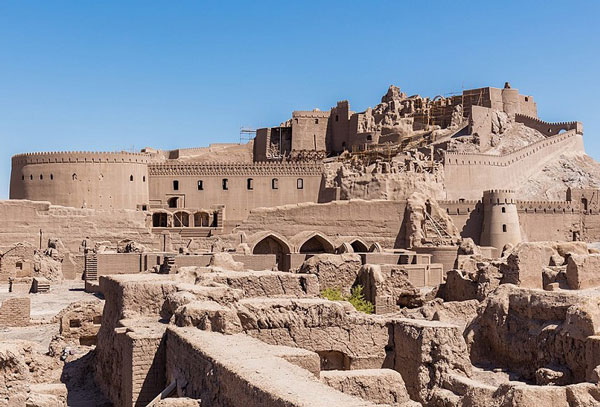
2. Takht-e-Soleyman:
Imagine wandering through the enchanting valleys of north-western Iran, where the archaeological marvel of Takht-e Soleyman unfolds amidst a backdrop of volcanic mountains. This off-the-beaten-path in IRAN is a Zoroastrian sanctuary that whispers tales of the Ilkhanid (Mongol) era’s reconstruction in the 13th century, and a Sasanian temple (6th and 7th centuries) paying homage to Anahita.
But here’s the real charm – Takht-e Soleyman isn’t just a relic of the past; it’s a symbol, a place with deep, symbolic roots. The intricate designs of the fire temple, the majestic palace, and the overall layout have left an everlasting imprint, shaping the very essence of Islamic architecture.
So, as you explore this historical haven, let the whispers of centuries past guide you through a journey where history, spirituality, and architectural influence converge in the captivating embrace of Takht-e Soleyman.
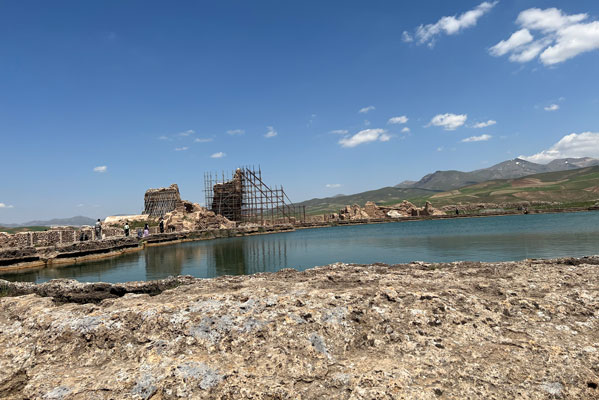
3. Gonbad-e-Qabus tower:
Imagine standing before a towering marvel that whispers tales of ancient Iran – the 53-meter-high tomb built in AD 1006 for Qābus Ibn Voshmgir, a Ziyarid ruler and luminary. Nestled near the remnants of the ancient city of Jorjan in north-east Iran, this tomb is more than just stone and bricks; it’s a living testament to the vibrant cultural dance between Central Asian nomads and the ancient Iranian civilization.
Picture this: Jorjan, once a bustling hub of arts and science, was brought to its knees during the Mongols’ invasion in the 14th and 15th centuries. Amid the ruins, this towering structure stands alone, a silent witness to the ebb and flow of history.
But it’s not just a relic. It’s a dazzling showcase of Islamic architecture, a beacon of innovation that left its mark across Iran, Anatolia, and Central Asia. Crafted with unglazed fired bricks, the monument’s intricate geometric dance forms a graceful tapering cylinder crowned with a conical brick roof.
So, as you explore this awe-inspiring tomb, remember that it’s not just a structure; it’s a living narrative of a bygone era, where mathematics, science, and art converged in the heart of the Muslim world at the turn of the first millennium AD.
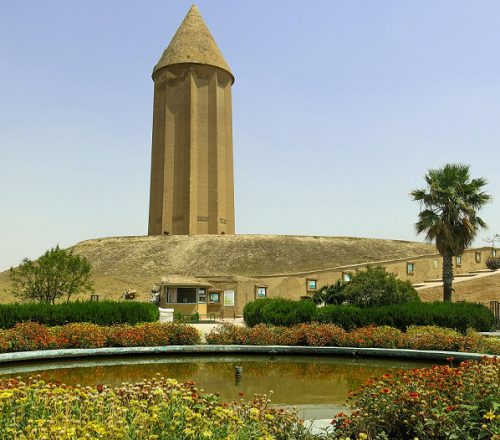
4. Qeshm island:
In this part of top 10 off-the-beaten paths in IRAN, Let’s talk about Qeshm Island, the crown jewel in the Persian Gulf’s waters, proudly belonging to Hormozgan province. Now, we’ve all heard the whispers of its unique beauty and enchanting features, right? Well, those aren’t just rumors – Qeshm Island is a hotshot on the Iranian tourism scene, and for good reason!
Picture this: Qeshm, the largest island in the Persian Gulf, lounging in the Strait of Hormuz like a boss. But here’s a fun fact from way back in the Sassanid era – it used to go by the name “Abarkan,” meaning “big island.” Fast forward to the Safavid period, and it adopted the snazzier moniker “Qeshm” or “Kashm” in the coastal folks’ lingo.
Now, let’s talk size. Qeshm Island covers a whopping 1491 square kilometers – that’s 2.5 times larger than the second-biggest kid on the Persian Gulf block, Bahrain. So, when we say it’s a big deal, we mean it in every sense.
So, whether you’re into history, natural wonders, or just soaking up the island vibes, Qeshm is your go-to spot in the Persian Gulf. It’s not just an island; it’s a whole experience waiting to unfold!

Qeshm Island : The Untouched Paradise
5. Imam Reza holy shrine:
Let’s chat about something truly awe-inspiring – Imam Reza’s Holy Shrine. It’s not just your average religious center; it’s the big daddy of them all in Iran. Picture this: a stunning blend of Persian-Islamic architecture that pulls in pilgrims from all corners of the globe, making it the e beating heart of spiritual devotion.
Now, the story goes back to the burial ground of Imam Reza in the Hamid Ebn Ghahbe garden, right next to the tomb of Abbasid Khalife Harun. That’s where the magic began. After the Imam’s martyrdom in 203 AH in Tous, they kicked things off with the Harun Al-Rashid monument. And guess what? Over time, that humble beginning transformed into the magnificent Mashhad-Al-Reza we know today.
But what makes this place so special? Well, it’s not just a shrine; it’s a whole complex – shrines, domes, finials, Ravagh, Bast, courtyards, porches, mosques, and Saqakhaneh, each adding a splash of architectural magic. It’s like stepping into a spiritual wonderland.
And then there’s Astane Qods Razavi, a powerhouse of holy shrines, cultural hubs, and more. Managed through pilgrims’ vows and endowments, it’s not just a place; it’s a living, breathing testament to faith, history, and the incredible journey of those who make the pilgrimage.
So, whether you’re an architecture enthusiast, a history buff, or just someone seeking a spiritual retreat, Imam Reza’s Holy Shrine is the place to be. It’s not just a destination; it’s an experience waiting to unfold!

6. Meymand village:
Picture this off the beaten paths in IRAN at the southern tip of Iran’s central mountains – Maymand. It’s not your usual spot; it’s a self-contained wonderland tucked away in a semi-arid valley. Now, here’s the scoop on Maymand’s vibe.
Meet the locals – semi-nomadic agro-pastoralists who’ve mastered the art of living with the land. Come spring and fall, they’re up in the mountains, herding animals and setting up camp. But when winter rolls in, they’ve got a unique plan – cozy cave dwellings carved right out of the soft rock, or as they call it, “kamar.” Talk about desert chic!
Maymand isn’t just a place; it’s a living cultural masterpiece. Imagine a lifestyle where people move more than the animals – a throwback to times gone by. It’s like stepping into a living storybook where migration isn’t just a necessity; it’s a way of life.
So, as you wander through Maymand’s semi-nomadic haven, soak in the tales of resilience, harmony with nature, and a living link to a heritage that’s as vibrant as the people who call it home. It’s more than a destination; it’s a conversation waiting to happen!
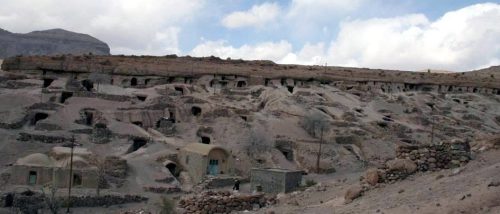
7. Alisadr cave:
Imagine this: a journey into the heart of time, where nature weaves its own Jurassic tale. Welcome to Alisadr Cave – the cool kid on the block, the only lagoon cave in Iran, and a global superstar from the Jurassic period. It’s not just big; it’s one of the largest and longest water caves in the world!
Nestled in Alisadr village, Hamedan province, this cave is like Mother Nature’s own secret. Sitting pretty at 1980 meters in the Zagros mountain, it’s not just a cave; it’s a piece of history. Back in the Safavid era (1501-1763), folks strolled through its entrance. Fast forward to 1962-1963, and a bunch of adventurous souls widened the doorway, making it more accessible.
Since 1975, Alisadr Cave has been open for business, inviting everyone to explore its twists, and turns, and a massive lake inside. And here’s the cool part – you get to cruise around in a boat, thanks to the streams that weave through the cave. The water’s clear as day, but hold off on the sipping – it’s got a bit too much calcareous salt for your liking.

8. Garmeh Oasis:
Our next pick in the top 10 off the beaten paths in IRAN is Garmeh. It’s not just a village; it’s a slice of paradise tucked away 350 km from Isfahan city, right on the Silk Road. Picture this: an oasis in the middle of nowhere, luring in wanderers from every corner of the world.
Situated 750 meters above sea level, Garmeh rocks a warm, dry vibe that’s just what you need. And those springs? They’re like nature’s little surprises, popping up from the heart of the mountains. But here’s the real charm – a wetland, cradled by palm trees, adding a touch of magic to the scenery.
Now, as you wander around, you’ll notice camels doing their thing in the deserts and fields nearby. And the houses? They perch on Khareh Hills, offering killer views of sprawling palm tree gardens. Oh, and here’s a fun fact – the folks in Garmeh speak Pahlavi, the OG Iranian language.
Best time to drop by? Spring, autumn, and winter serve up the perfect weather cocktail. So, if you’re up for a journey into a hidden oasis with a dash of history, Garmeh’s your spot. It’s not just a village; it’s a vibe waiting for you to soak it all in!
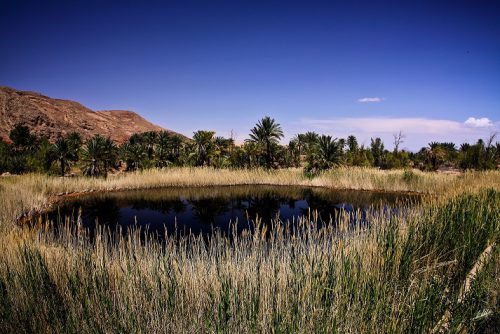
9. Qale Rudkhan:
Rudkhan Castle? Trust me; it’s not your average historical site. We’re talking about a castle that sits like royalty on the peaks of mighty mountains, surrounded by deep valleys and embraced by the lush forests of Fuman. If you’re even remotely considering a trip to Iran, this is the place you want to hear about.
Picture this: back in 1830, a Polish rockstar of Iranology, Alexander Khodzko, stumbles upon this hidden gem. And the history? Oh, it’s a rollercoaster. Built during the Sassanid dynasty and witnessing the Arab conquest of Iran, this castle has seen it all. Fast forward to the Seljuk era, and it gets a makeover, thanks to the Ismailis of Alamut who knew a good fortress when they saw one.
But wait, there’s more! The Safavid period rolls around, and Sultan Hessam al-Din decides Rudkhan Castle needs a facelift. Why? Well, he’s got plans to use it for defense and battles, a move that didn’t sit well with the Safavids. There’s even an inscription at the entrance gate, spillin’ the medieval tea, now chilling in the Rasht Museum.
So, if you’re into castles, forests, and a dash of rebellion, Rudkhan Castle is your jam. It’s not just a castle; it’s a time-traveling adventure waiting to happen!
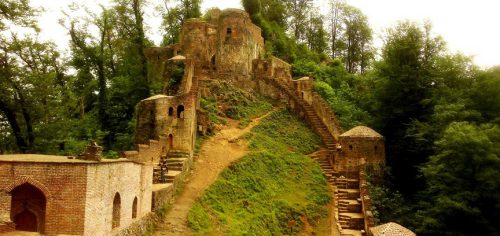
10. Bishaour city:
In the last one in our top 10 off-the-beaten paths in IRAN list, buckle up for a ride through time to a not-so-famous but utterly incredible ancient city – Bishapour! Tucked about 140 kilometers away from Shiraz, near Kazerun, this place might not be shouting from the historical mountaintops like Persepolis, but trust me, it’s a hidden gem you don’t want to miss when you’re trotting through Iran.
Once upon a time, during the Sassanid Dynasty, Bishapour was the cool kid on the block, covering a whopping 200 hectares. Imagine a city framed by majestic mountains and lofty hills – yeah, it’s that picturesque. Shoutout to Shapour I, the Sassanid king who called the shots and made this city happen between 241 to 272 AD. There’s some serious history here, including a victory over Valerian, the Emperor of Rome, that sparked the idea to build Bishapour in the first place.
So, what’s the story? After the epic showdown between Iran and the Roman Empire, Shapur the Great had a grand plan. He ordered Roman soldiers to roll up their sleeves and construct Bishapour right on the road linking Persepolis and Ctesiphon. And voila – a city with a river and a fountain, ensuring a lush water supply for its clever residents who channeled water like pros through canals
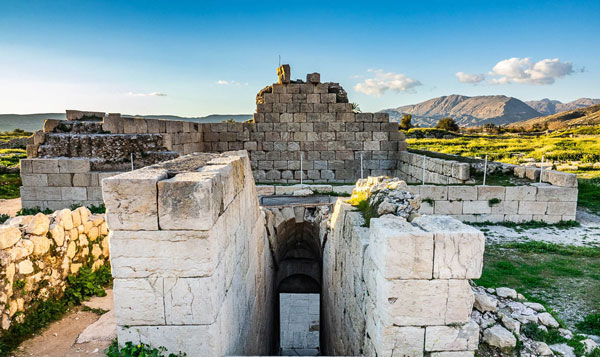
At the end of the top 10 off-the-beaten paths in IRAN, Let’s watch this amazing video from 8K Xplore’s YouTube channel:
Iran is a country that will leave you speechless! Join us as we embark on an extraordinary journey through this mesmerizing land of rich history, vibrant culture, and breathtaking landscapes. From the ancient ruins of Persepolis to the bustling streets of Tehran, we’ll uncover the hidden gems and stunning beauty that Iran has to offer.
This was off the beaten path in Iran. For more info please contact Tours Of Iran.

